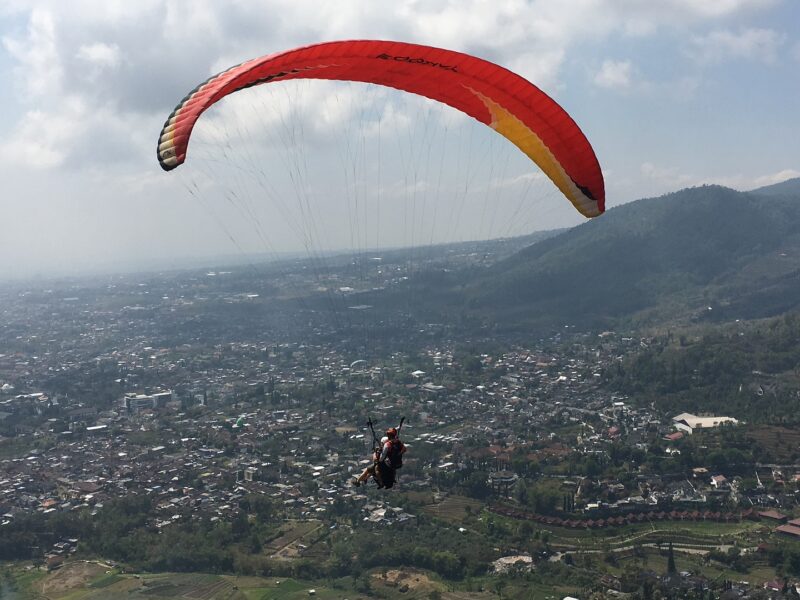Explore the Spiritual Essence of Jyotirlingas in India
The term “Jyotirlinga” is derived from two Sanskrit words: ‘Jyoti’, meaning ‘radiance’, and ‘Linga’, referring to ‘mark’ or ‘sign’. These sacred shrines are believed to be the radiant signs of Lord Shiva, embodying his omnipresence. India is home to 12 Jyotirlingas, each located in a unique setting, drawing devotees from across the country who embark on a pilgrimage to experience spiritual enlightenment.
Embarking on a pilgrimage to these Jyotirlingas is not just a spiritual quest but a journey into the heart of India’s divine tranquility and architectural grandeur. Each of these sites offers more than just spiritual solace; they are places of incredible beauty and peace, where the serene surroundings enhance the spiritual experience.
If you’re considering a spiritual journey, start with the 12 Jyotirlingas. Each site narrates a story of devotion and miraculous occurrences attributed to Lord Shiva. Visiting these holy places allows you to witness the physical manifestations of the divine, which are far more captivating than any image could convey. Prepare your itinerary to explore these divine locations, each offering a unique glimpse into spiritual devotion and scenic beauty.
12 Jyotirlingas In India – Temples Of Lord Shiva
Discover the Sacred Jyotirlingas of India: A Pilgrim’s Guide
India’s spiritual landscape is dotted with 12 Jyotirlingas, revered manifestations of Lord Shiva that attract devotees and travelers from across the globe. Each Jyotirlinga holds a unique story and is a beacon of spiritual energy. If you’re planning a pilgrimage or simply wish to explore these sacred sites, this guide provides essential information on each location to help you organize your journey effectively.
Here is a detailed list of the 12 Jyotirlingas, including their names and locations, to assist you in planning your spiritual adventure:
- Somnath – Located in Gir Somnath, Gujarat, this revered temple is celebrated for its stunning architecture and historical significance.
- Nageshwar – Situated in Daarukavanam, Gujarat, this sanctuary is known for its serene setting and the powerful deity it houses.
- Bhimashankar – Nestled in the hills near Pune, Maharashtra, this site offers not just spiritual enrichment but also captivating natural beauty.
- Trimbakeshwar – Located in Nashik, Maharashtra, this temple is famous for its ancient religious importance and the river Godavari that originates nearby.
- Grishneshwar – Positioned close to Aurangabad, Maharashtra, this temple is revered for its exquisite carvings and sculptures.
- Vaidyanath – In Deoghar, Jharkhand, this Jyotirlinga is a place of healing and miracles, drawing numerous pilgrims seeking divine blessings.
- Mahakaleshwar – This temple in Ujjain, Madhya Pradesh, is particularly known for its Bhasma Aarti, a unique ritual that involves sacred ash.
- Omkareshwar – Located on an island in Khandwa, Madhya Pradesh, this site is renowned for its scenic beauty and spiritual atmosphere.
- Kashi Vishwanath – Situated in the ancient city of Varanasi, Uttar Pradesh, it is one of the most famous and venerated pilgrim sites in India.
- Kedarnath – Set against the backdrop of the majestic Himalayas in Uttarakhand, this temple is part of the famous Char Dham pilgrimage.
- Rameshwaram – Located on Rameswaram Island in Tamil Nadu, this sprawling temple complex is linked to the epic Ramayana.
- Mallikarjuna – Situated in Srisailam, Andhra Pradesh, this temple is celebrated for its rich traditions and vibrant festivals.
Each Jyotirlinga offers a unique spiritual experience, making these sites must-visit destinations for anyone interested in India’s religious heritage. Whether you are a devout pilgrim or a curious traveler, visiting these Jyotirlingas can be a profoundly enriching experience.
Jyotirlingas In West India
Explore the Spiritual Riches of West India: The Jyotirlingas of Gujarat and Maharashtra
Discover the path to spiritual enlightenment by visiting the Jyotirlingas located in the vibrant regions of Maharashtra and Gujarat. Among the sacred 12 Jyotirlingas, these destinations offer a deep dive into the spiritual practices and historic legacies of India.
1. Somnath – Gir Somnath, Gujarat
Renowned as the foremost of the twelve original Jyotirlingas, the Somnath Temple stands as a monumental beacon of spirituality and resilience. According to the Shiva Purana, this temple marks the spot where Lord Shiva appeared as a powerful pillar of light. Legend tells us of the Moon God, who was cursed for favoring his wife Rohini over others. To atone and restore his beauty, he worshipped Lord Shiva here, who then chose to reside eternally at Somnath, sanctifying the land.
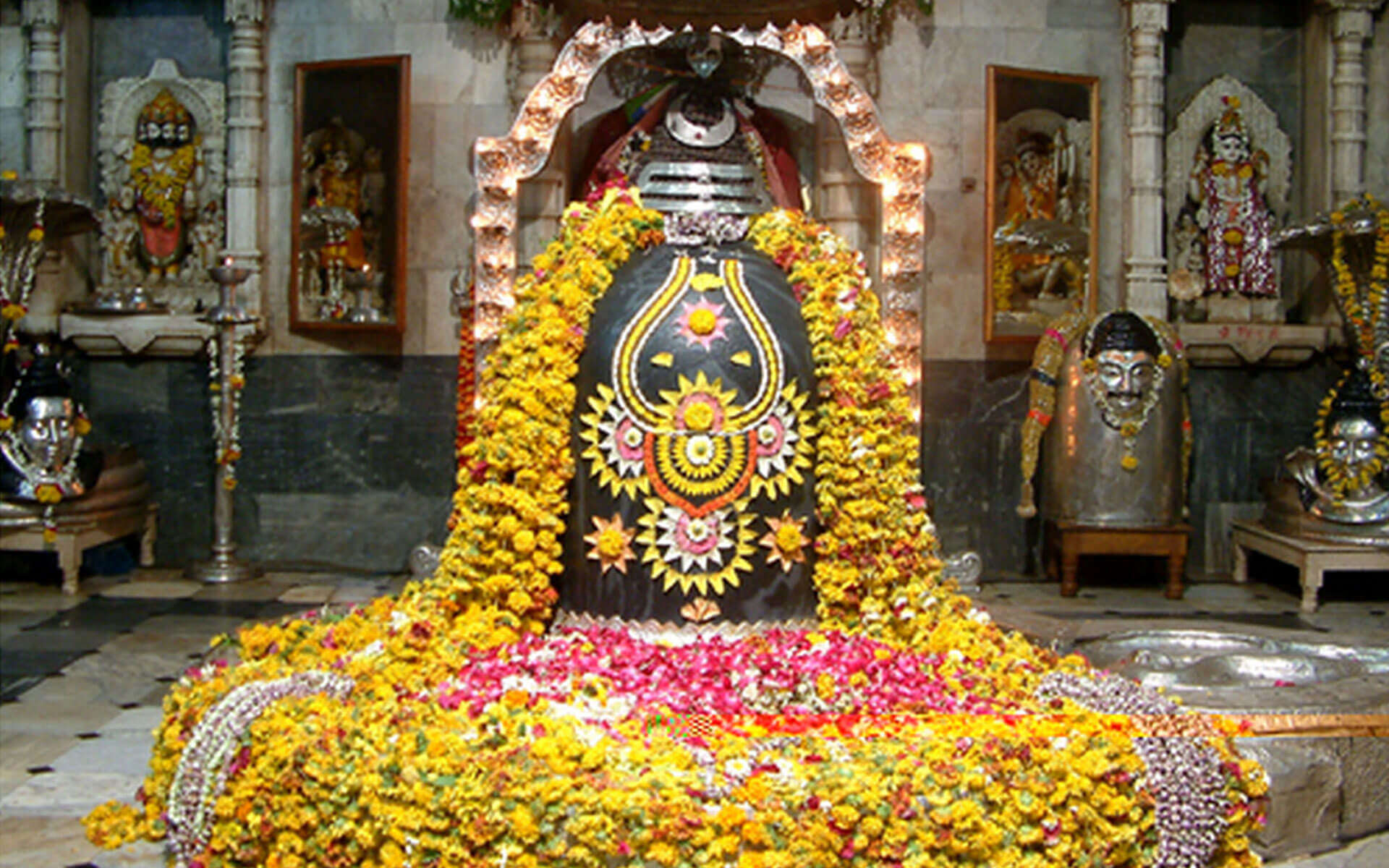
Image Source
The temple, embodying the architectural grandeur of the Chalukya style, has withstood the tests of time and history, having been rebuilt 16 times after being destroyed in various invasions. Today, it remains a top pilgrimage site, drawing visitors not just for its religious significance but also for its historical resilience.
Visiting Hours and Rituals:
The temple is open daily from 6 AM to 9 PM. Devotees can attend the Aarti ceremonies, which occur at 7 AM, 12 noon, and 7 PM. Additionally, the temple hosts a captivating light and sound show titled ‘Joy Somnath’ every evening from 8 to 9 PM, which narrates the temple’s rich history.
Accessibility:
Somnath is most easily accessed via the Veraval Railway Station, which is about 5 kilometers away. Frequent taxi and cab services are available from the station, ensuring a convenient journey to the temple.
This guide to the Jyotirlingas in West India not only enlightens visitors on the spiritual importance but also invites them to experience the serene beauty and profound tranquility of these sacred sites. Whether you’re a spiritual seeker or a lover of history and culture, the Jyotirlingas of Gujarat and Maharashtra offer a deeply rewarding journey.
2. Nageshwar – Daarukavanam In Gujarat
Situated along the picturesque Saurashtra coast, nestled between the spiritual towns of Gomati Dwarka and Bait Dwarka, the Nageshwar Temple is a celebrated Jyotirlinga shrine in India. It attracts a multitude of devotees year-round who come to seek blessings at the Nageshwar Mahadev, revered as a powerful protector against all forms of negativity and poison.
The temple’s underground sanctum, where the deity resides, is a place of profound peace and power. Above ground, the temple complex is equally impressive, featuring a towering 25-meter statue of Lord Shiva that dominates the landscape. The expansive gardens and the breathtaking views of the Arabian Sea further enhance the spiritual and sensory experience, making Nageshwar not just a pilgrimage site but a destination of natural beauty and tranquility.
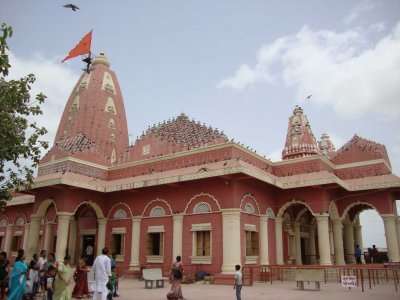
Image Source
Temple Visiting Hours:
Nageshwar welcomes visitors daily from 5 AM to 9 PM. The darshan timings are from 6 AM to 12:30 PM and again from 5 PM to 9 PM, allowing devotees and tourists ample time to experience the divine and serene environment.
Getting There:
The temple is accessible via the nearest railway stations at Dwarka and Veraval. For those coming by air, Jamnagar Airport, located 45 kilometers away, serves as the closest airport, providing convenient links to Dwarka and subsequently to the temple.
Visiting Nageshwar offers not only a spiritual awakening but also an opportunity to immerse yourself in the cultural heritage and picturesque settings of Gujarat’s coastal landscape. Whether you are a devout pilgrim or a casual tourist, the Nageshwar Jyotirlinga stands as a testament to the enduring spiritual tradition and natural beauty of India.
3. Bhimashankar – Pune In Maharashtra
Set against the tranquil backdrop of the Bhima River, the Bhimashankar Temple is an architectural marvel crafted from dark volcanic rock in the traditional Nagara style. This revered site is not only a spiritual haven but also a gateway to the lush Bhimashankar Wildlife Sanctuary. Legend has it that the temple was constructed by Bheema, the son of Kumbhakarna, adding a layer of mythological significance to its storied stones.
The temple attracts a large number of pilgrims throughout the year, with the influx peaking during the auspicious occasion of Maha Shivratri. Adjacent to the main shrine is the Kamalaja Temple, dedicated to Goddess Parvati in her form as Kamalaja, which further enhances the site’s spiritual allure.
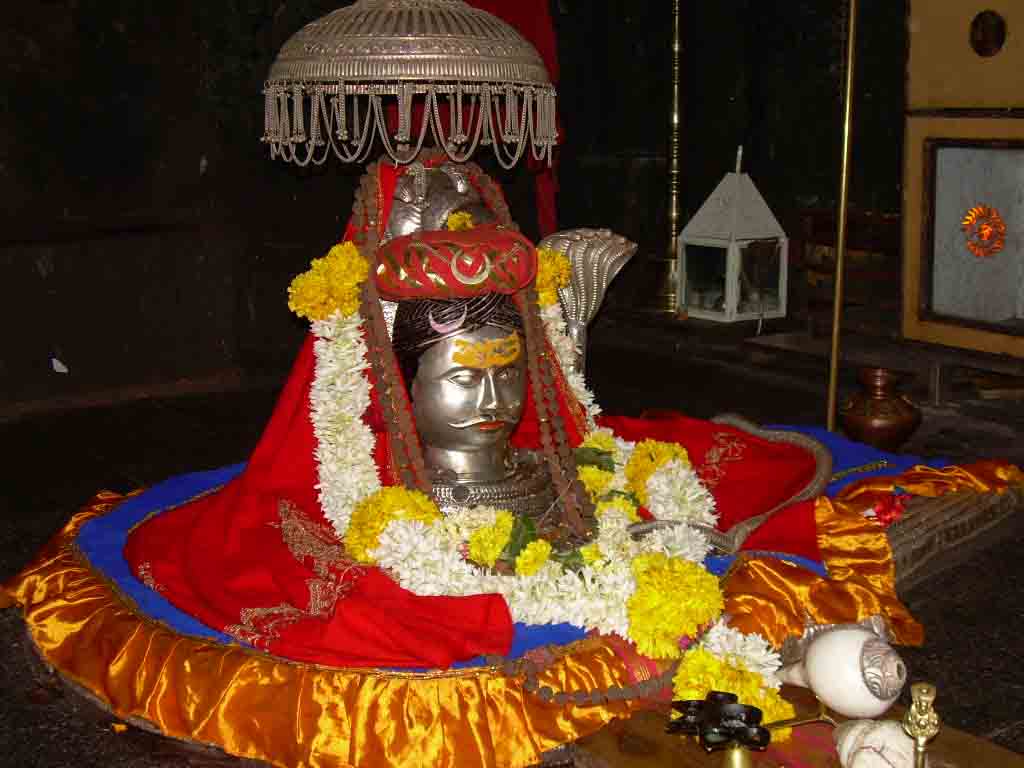
Image Source
Temple Visiting Hours:
Bhimashankar Temple is open to devotees every day. The darshan timings are from 4:30 AM to 12 noon and from 4 PM to 9:30 PM, with a brief closure for the Madhyan Aarti at midday, which lasts for about 45 minutes.
Access to Bhimashankar:
The closest railway station to Bhimashankar is Karjat, located approximately 168 kilometers away. From there, visitors can either take a bus or hire a rickshaw to complete their journey to the temple.
Visiting Bhimashankar offers a unique blend of spiritual fulfillment and natural beauty. Whether you’re there to pay homage to the divine or to simply soak in the peaceful ambiance and stunning scenery, Bhimashankar provides a deeply enriching experience for all.
4. Trimbakeshwar – Nashik In Maharashtra
Explore the Spiritual Depths of Trimbakeshwar Jyotirlinga in Nashik, Maharashtra
Located at the foothills of the sacred Brahmagiri Mountain, Trimbakeshwar holds a unique position among the Jyotirlingas of India. It is here that the Godavari River, reverently referred to as ‘Gautami Ganga’, originates. The Shiv Purana recounts that both the river and the sage Gautami Rishi implored Lord Shiva to make his abode here, leading to the divine manifestation of the Trimbakeshwar Jyotirlinga.
What sets Trimbakeshwar apart is not just its divine origin but also its distinctive architectural feature: the jyotirlinga here is not a typical shrine but a void with three pillars inside it. These pillars symbolize the Hindu Trinity—Brahma, Vishnu, and Shiva (Maheshwar), representing creation, preservation, and destruction, respectively.
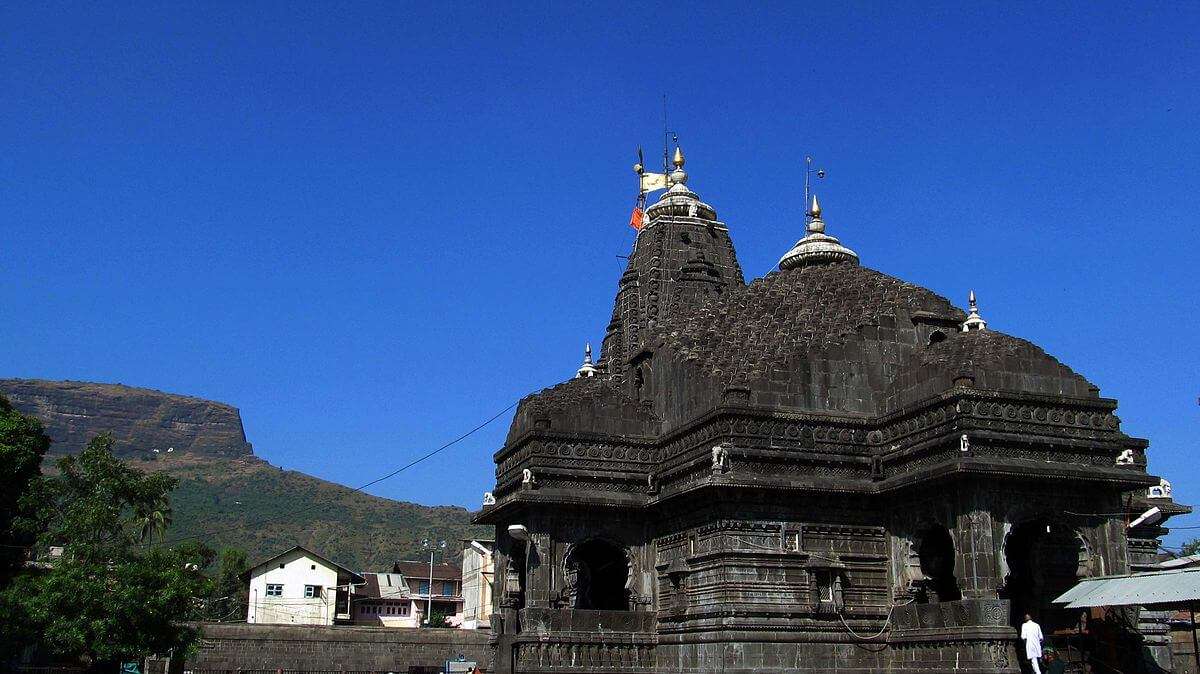
Image Source
Temple Visiting Hours:
Open daily from 5:30 AM to 9 PM, Trimbakeshwar welcomes pilgrims and visitors throughout the year, offering a serene and profound spiritual experience.
Getting There:
Trimbakeshwar is well-connected by air, rail, and road. The nearest major airport is the Chhatrapati Shivaji International Airport in Mumbai. For those traveling by train, the closest station is Igatpuri Railway Station. Additionally, Nashik’s road network makes it easily accessible by car or bus from various parts of Maharashtra and neighboring states.
A visit to Trimbakeshwar is more than a pilgrimage; it is a journey into the heart of Indian spirituality and natural beauty. This sacred site not only offers a chance to witness a unique divine representation but also to explore the scenic landscapes of Nashik.
5. Grishneshwar – Aurangabad In Maharashtra
Discover the Majestic Grishneshwar Temple in Aurangabad, Maharashtra
Grishneshwar Temple, an architectural marvel, is renowned for its striking five-story red rock Shikhara style structure. This temple, one of the revered 12 Jyotirlingas as described in the Shiva Purana, is situated close to the historic caves of Ajanta and Ellora. Built by the legendary queen Ahilyabai Holkar, the temple is also referred to as Gru Someswara and Kusum Eswarar.
Visitors are captivated by the intricate carvings of various gods and goddesses and the imposing Nandi Bull in the main court hall. A standout feature is the detailed sculpture of Vishnu’s Dashavatar, exquisitely carved into the red rock, which draws admiration for its artistry and craftsmanship. The temple’s location makes it a top cultural and spiritual attraction in Aurangabad.
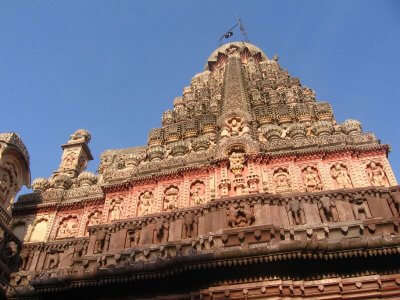
Image Source
Temple Visiting Hours:
The temple is open daily from 5:30 AM to 9:30 PM for darshan and puja. During the holy month of Shravan, the hours adjust to 3 PM to 11 PM to accommodate the increased number of pilgrims. Visits typically last a couple of hours, but during Shravan, expect it to take 6 to 8 hours due to the large influx of devotees.
How to Reach Grishneshwar:
Aurangabad is well-connected to major cities of India via train and flight, with direct connections from Delhi. Once in Aurangabad, Grishneshwar is only a 30 km drive away, easily accessible by taxi.
Grishneshwar Temple is not just a place of worship but a monument of immense cultural significance and beauty, offering a profound glimpse into India’s rich spiritual heritage and architectural grandeur. This temple is a must-visit for those exploring the treasures of Aurangabad.
Jyotirlingas In East And Central India
6. Vaidyanath – Deoghar In Jharkhand
Explore the Sacred Vaidyanath Jyotirlinga in Deoghar, Jharkhand
Nestled in the spiritual town of Deoghar, the Vaidyanath Jyotirlinga is one of the most sacred among the 12 Jyotirlingas and also one of the 52 Shakti Peethas in India. This shrine holds a special place in Hindu mythology and is closely associated with the legend of Ravana, the demon king of Lanka, who performed severe penance to win Lord Shiva’s favor. According to lore, Shiva manifested as a Shivalinga to be taken to Lanka, instructing Ravana not to place it down until he reached his destination.
However, Lord Vishnu intervened, causing Ravana to rest the linga momentarily at Deoghar. Defying Shiva’s command, the linga became permanently fixed at this spot, where it is worshipped as Vaidyanath. The temple sees its peak pilgrimage during the auspicious month of Shravana, where devotees believe that praying here grants relief from suffering and leads to salvation.
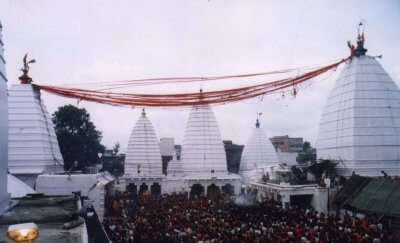
Image Source
Temple Visiting Hours:
Vaidyanath Temple welcomes devotees every day from 4 AM to 3:30 PM and from 6 PM to 9 PM. On special occasions like Maha Shivaratri, the temple extends its hours to accommodate the throngs of devotees seeking blessings.
Accessing Vaidyanath:
The closest railway station to Vaidyanath is Jasidih Junction, accessible from major cities like Ranchi. From Jasidih, the temple is a mere 15 kilometers away and easily reachable by auto-rickshaw or taxi.
Visiting the Vaidyanath Jyotirlinga offers not only a deep dive into the rich tapestry of Hindu mythology but also an opportunity to experience the spiritual and tranquil ambiance of Deoghar. This site is a must-visit for those seeking both spiritual fulfillment and a touch of historical intrigue.
7. Mahakaleshwar – Ujjain In Madhya Pradesh
Discover the Spiritual Heart of Ujjain: Mahakaleshwar Jyotirlinga
Situated amidst the verdant expanse of the ancient Mahakal Forest, the Mahakaleshwar Temple in Ujjain is a pivotal site of worship and one of the central Jyotirlingas in India. This temple, steeped in rich spiritual traditions, is believed to have been established by a young boy named Srikar, inspired by the piety of Ujjain’s King Chandrasena. Nestled along the sacred banks of the Kshipra River, Mahakaleshwar is not only a prominent Jyotirlinga but also one of the seven sacred mukti-sthals, believed to grant moksha or liberation from the cycle of life and death.
The temple’s profound spiritual aura and historical backdrop make it a major pilgrimage destination, drawing devotees and tourists seeking solace and eternal peace.
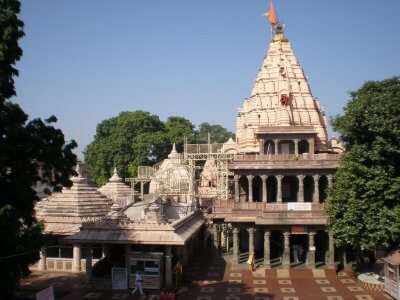
Image Source
Temple Visiting Hours:
Mahakaleshwar Temple is open from 4 AM to 11 PM daily. Darshan times are scheduled from 8 AM to 10 AM, 10:30 AM to 5 PM, 6 PM to 7 PM, and 8 PM to 11 PM, allowing devotees ample opportunity to engage in worship and experience the divine presence.
Getting to Mahakaleshwar:
The most convenient airport is located in Indore, approximately 51 kilometers away. Additionally, Ujjain is well-served by several railway stations including Ujjain Junction, Chintaman, Vikram Nagar, and Pingleshwar, making it accessible by train from various parts of India.
A visit to Mahakaleshwar Jyotirlinga offers a unique blend of divine experience and cultural heritage, set in the mystical environment of Ujjain’s historical landscapes. Whether you are on a spiritual journey or exploring India’s rich religious architecture, Mahakaleshwar provides an unforgettable encounter with the sacred.
8. Omkareshwar – Khandwa In Madhya Pradesh
Experience Divine Serenity at Omkareshwar Jyotirlinga in Madhya Pradesh
Omkareshwar, which means ‘Lord of the Om Sound,’ stands as a beacon of sanctity and one of India’s most revered pilgrimage sites. This Jyotirlinga is uniquely situated on Shivapuri Island, cradled by the sacred Narmada River. The island’s shape, resembling the Hindu Om symbol, adds to its mystical appeal and draws spirituality seekers from around the world.
Legend has it that this site was where the Devas (gods) and Danavas (demons) once battled fiercely. In their hour of need, the Devas prayed to Lord Shiva for victory. Pleased with their devotion, Shiva appeared as Omkareshwar and granted them triumph over the forces of evil, cementing this location’s importance among the celebrated 12 Jyotirlingas.
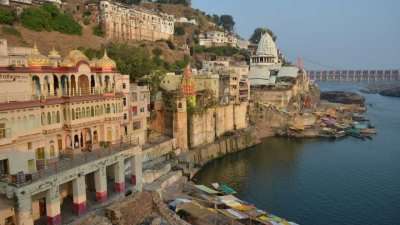
Image Source
Temple Visiting Hours:
Omkareshwar Temple welcomes visitors every day from 5 AM to 10 PM. For those planning to partake in darshan, the temple is open from 5:30 AM to 12:20 PM and from 4 PM to 8:30 PM, ensuring ample time for prayer and reflection.
Getting to Omkareshwar:
The temple is most accessible from Indore, which is 77 kilometers away and has the nearest airport and major railway station. Ujjain, another major city, is 133 kilometers away. Regular bus services from Indore, Ujjain, and Khandwa make it easy to reach Omkareshwar, facilitating a smooth journey for devotees and tourists alike.
Visiting Omkareshwar offers not only a spiritual retreat but also an opportunity to explore the natural beauty and serene environment of the Narmada River surroundings. It’s an ideal pilgrimage for those seeking peace and spiritual rejuvenation amidst India’s rich cultural tapestry.
Jyotirlingas In North India
9. Kashi Vishwanath – Varanasi In Uttar Pradesh
Discover the Spiritual Grandeur of Kashi Vishwanath Temple in Varanasi, Uttar Pradesh
Famously referred to as the Golden Temple of Varanasi, Kashi Vishwanath stands as a monumental spiritual site within the bustling ancient city. Constructed in 1780 by Maharani Ahilyabai Holkar, a revered Maratha monarch, this temple is celebrated as one of the most significant Jyotirlingas among the twelve sacred to Hinduism. It epitomizes divine presence, where devotees believe Lord Shiva offers liberation and boundless joy to those who seek his blessings.
Kashi Vishwanath is not only renowned for its religious significance but also for its architectural beauty and historical importance. It is said that this Jyotirlinga manifested itself, breaking through the Earth to ascend towards heaven, illustrating its preeminence among gods.
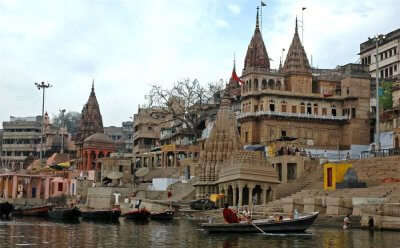
Image Source
Temple Visiting Hours:
The temple is open daily from 2:30 AM until 11 PM, accommodating a series of rituals and pujas:
- Mangala Aarti: 3 AM to 4 AM
- Sarva Darshan: 4 AM to 11 AM
- Bhog Aarti: 11:15 AM to 12:20 PM
- Sarva Darshan: 12:20 PM to 7 PM
- Sandhya Aarti: 7 PM to 8:15 PM
- Shringara Aarti: 9 PM to 10:15 PM
- Shayana Aarti: 10:30 PM to 11 PM
Accessibility to Kashi Vishwanath:
Varanasi is well-connected by rail, with Varanasi Junction being the nearest major railway station. Additionally, the city’s extensive network of roads and local transport options makes it easily accessible for pilgrims and tourists alike.
Visiting the Kashi Vishwanath Temple is an experience steeped in spiritual richness and cultural heritage, offering visitors a profound connection to the divine amidst the historic splendor of Varanasi. This temple not only provides a place for pious worship but also a chance to witness the enduring legacy of one of India’s oldest and most sacred cities.
10. Kedarnath – Kedarnath In Uttarakhand
Explore the Spiritual Summit: Kedarnath Jyotirlinga in Uttarakhand
Perched in the majestic Rudra Himalayan Range at an impressive altitude of 3,583 meters (about 11,755 feet), the Kedarnath Temple is not only one of the revered Jyotirlingas but also a crucial part of the Char Dham pilgrimage in Hinduism. The temple’s divine atmosphere is magnified by its breathtaking surroundings and the profound devotion of the pilgrims visiting it.
Due to its high altitude and harsh weather conditions, Kedarnath remains accessible only from April to November each year. Pilgrims typically begin their spiritual journey by visiting the sacred sites of Gangotri and Yamunotri to collect holy waters, which they then offer at Kedarnath. This ritual is believed to cleanse followers of all misfortunes and lead them towards a path of righteousness and peace.
The trek to Kedarnath is a challenging yet spiritually rewarding experience. Many pilgrims use walking sticks or hire mules and palanquins (dolis) to assist in their journey through the rugged terrain. Behind the main temple lies the Samadhi of Adi Shankaracharya, the revered Hindu philosopher and saint, adding to the site’s spiritual significance.
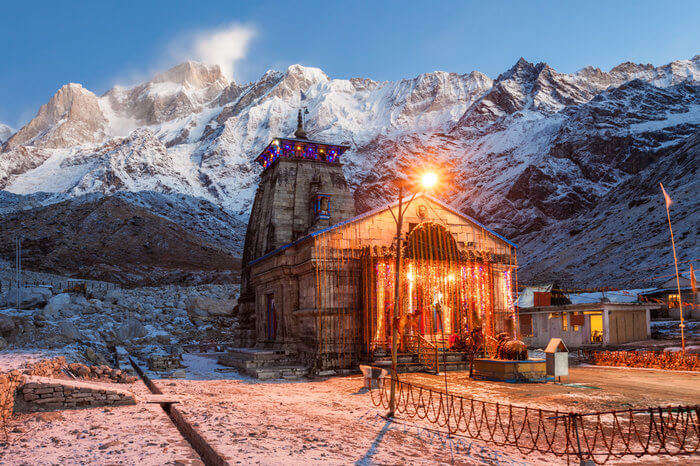
Image Source
Temple Visiting Hours:
The temple welcomes visitors daily from 4 AM to 12 Noon and from 3 PM to 9 PM during its open months.
Getting to Kedarnath:
The nearest airport to Kedarnath is the Jolly Grant Airport in Dehradun, while the closest railway station is in Rishikesh. Road connectivity extends up to Gaurikund, which serves as the starting point for the 16-km trek to the temple.
A pilgrimage to Kedarnath is a profound journey, offering not just spiritual enlightenment but also a chance to witness the raw beauty of the Himalayas. Whether you seek spiritual solace or the thrill of an arduous trek, Kedarnath promises a journey that is both transformative and awe-inspiring.
Jyotirlingas In South India
11. Rameshwaram – Rameswaram Island In Tamil Nadu
Explore the Divine Splendor of Rameshwaram Jyotirlinga in Tamil Nadu
Situated on the serene Rameswaram Island, the Rameshwaram Jyotirlinga is not only a pivotal spiritual site but also a stunning architectural marvel. Known as the southernmost of the twelve Jyotirlingas, this temple is steeped in legend and history, most notably worshipped by Lord Rama after his victorious return from Lanka, as depicted in the epic Ramayana.
Rameshwaram, often referred to as the ‘Varanasi of the South’, attracts devotees from across the globe with its intricate corridors and sacred ponds, known as theerthams—36 in number, each imbued with its own mythology. The temple’s proximity to the sea adds to its mystical allure, making it a significant pilgrimage site that also offers panoramic views and a tranquil atmosphere.
Adjacent to this sacred site is Dhanushkodi beach, the starting point of the mythological Ram Setu (Adam’s Bridge) that Lord Rama is said to have built across the sea to Lanka. This location is not just a testament to the temple’s divine roots but also a place of historical intrigue.
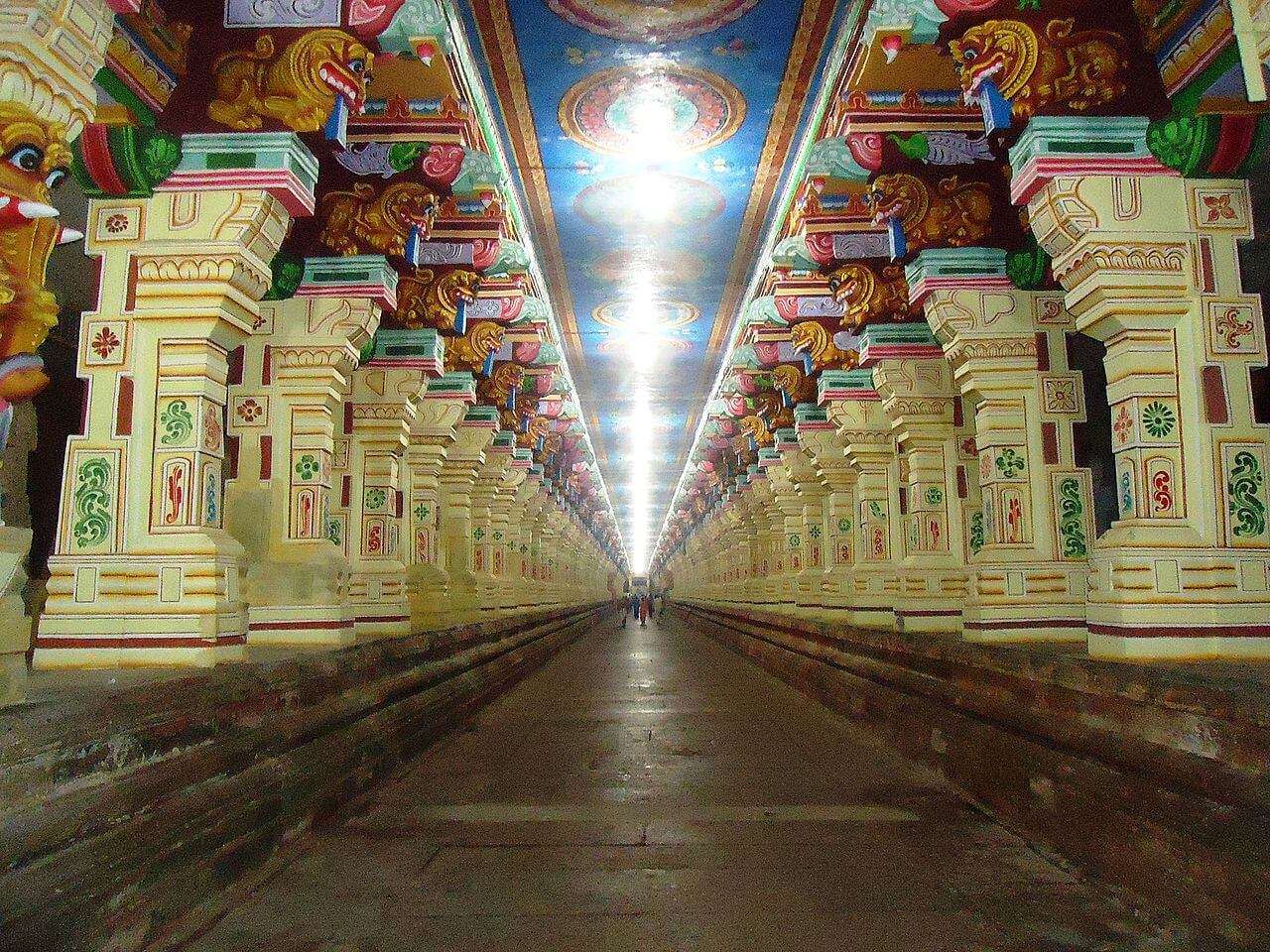
Image Source
Temple Visiting Hours:
The temple opens its doors to pilgrims from 5 AM to 1 PM and from 3 PM to 9 PM daily, with darshan available until 8 PM.
Getting to Rameshwaram:
Rameshwaram is most accessible via the Madurai Airport, located about 163 kilometers away. The island is also well-connected by rail, with direct train services from major South Indian cities like Chennai, ensuring a convenient journey for visitors.
A visit to Rameshwaram offers a unique combination of spiritual enrichment, historical exploration, and natural beauty, making it a must-visit destination for those seeking a profound pilgrimage experience in the heart of Tamil Nadu.
12. Mallikarjuna – Srisailam In Andhra Pradesh
Explore the Divine Mallikarjuna Jyotirlinga in Srisailam, Andhra Pradesh
Mallikarjuna Jyotirlinga, often hailed as the ‘Kailash of the South,’ is one of the most significant Shaivite temples in India. This sacred temple is perched atop the picturesque Shri Saila Mountain, gracefully overlooking the banks of the River Krishna. Known for its remarkable architectural design featuring intricate sculptures, majestic gopurams (decorative temple towers), and the expansive mukha mandapa hall, Mallikarjuna is a site of immense spiritual and aesthetic significance.
The temple enshrines Lord Shiva and Goddess Bhramaramba (a form of Parvati), making it also one of the revered 52 Shakti Peeths, where each is believed to enshrine a piece of the divine power of Goddess Sati. As such, Mallikarjuna is a pivotal pilgrimage destination for both Shaivites and Shakti devotees, offering a profound spiritual experience in a serene setting.
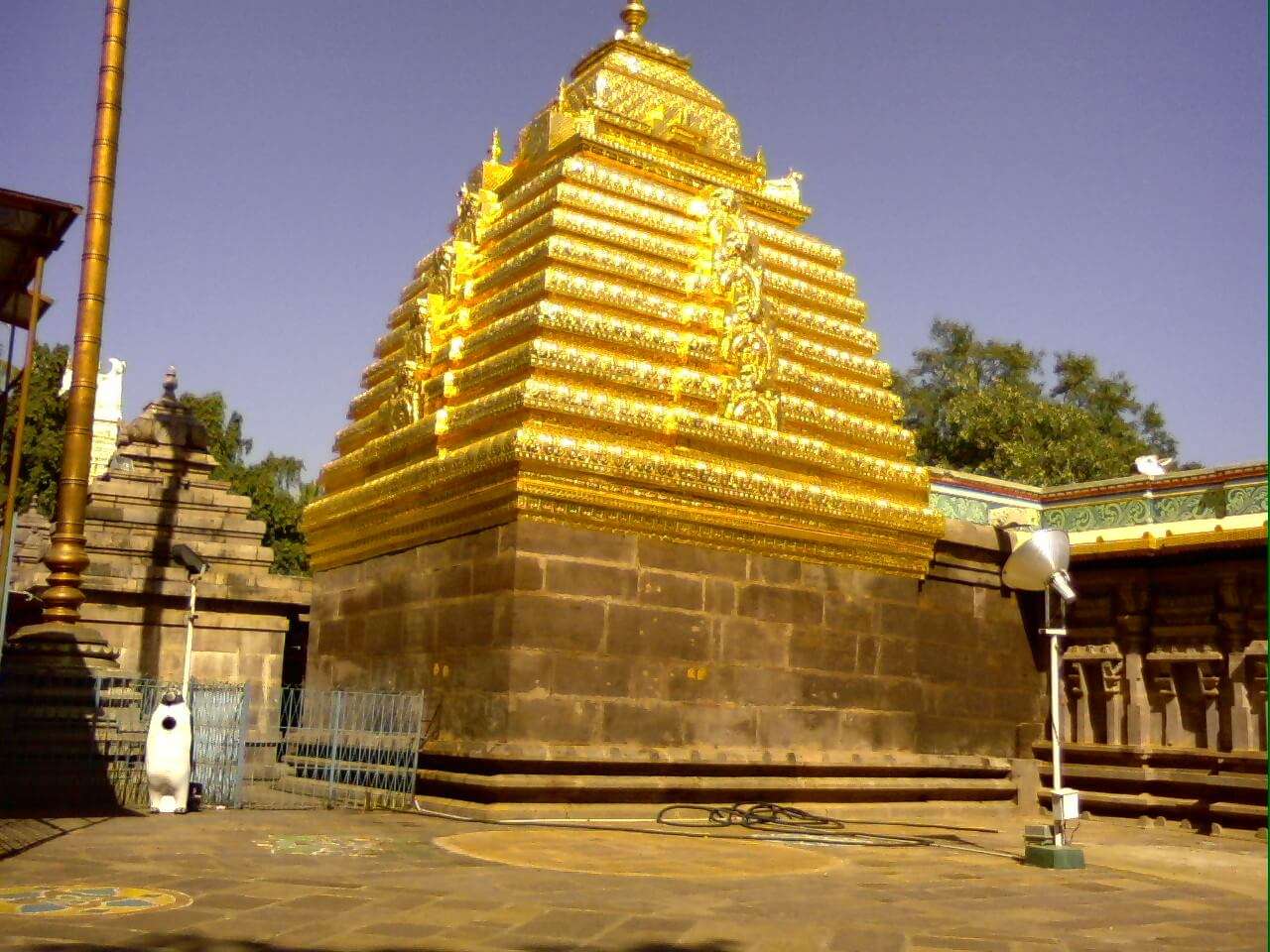
Image Source
Temple Visiting Hours:
Mallikarjuna Jyotirlinga welcomes pilgrims daily from 4:30 AM to 10:00 PM. The darshan timings are conveniently set from 6:30 AM to 1:00 PM and again from 6:30 PM to 9:00 PM, allowing devotees ample time to engage in worship and contemplation.
Getting to Mallikarjuna:
Located in Srisailam, the temple is accessible by road from nearby towns such as Doranala, Markapur, and Kurichedu, with scenic drives that complement the spiritual journey. The nearest railway station is Markapur Railway Station, connecting the region to various parts of Andhra Pradesh and beyond.
Visiting the Mallikarjuna Jyotirlinga offers not only a journey into the heart of spiritual India but also a chance to witness the grandeur of Dravidian temple architecture and immerse oneself in the tranquil beauty of Srisailam’s mountainous landscapes. It’s an essential visit for those exploring the rich tapestry of India’s religious heritage.
Frequently Asked Questions About the 12 Jyotirlingas in India
1. What is a Jyotirlinga?
A Jyotirlinga is a sacred object representing Lord Shiva, where ‘Jyoti’ means light and ‘Linga’ represents the sign of Shiva. Jyotirlingas are the radiant symbols of the Almighty Shiva, believed to be the sites where Shiva appeared as a fiery column of light.
2. How many Jyotirlingas are there in India?
There are twelve Jyotirlingas spread across India. Each holds significant spiritual value and attracts millions of devotees every year.
3. Can you list the 12 Jyotirlingas and their locations?
Sure, here are the 12 Jyotirlingas and their locations:
- Somnath in Gujarat
- Mallikarjuna in Andhra Pradesh
- Mahakaleshwar in Madhya Pradesh
- Omkareshwar in Madhya Pradesh
- Kedarnath in Uttarakhand
- Bhimashankar in Maharashtra
- Kashi Vishwanath in Uttar Pradesh
- Trimbakeshwar in Maharashtra
- Vaidyanath in Jharkhand
- Nageshwar in Gujarat
- Rameshwaram in Tamil Nadu
- Grishneshwar in Maharashtra
4. Which Jyotirlinga is considered the most important?
All Jyotirlingas are considered equally important as they each embody a distinct manifestation of Lord Shiva. However, the significance might vary among devotees based on the mythology and miracles associated with each site.
5. Are there specific rituals associated with visiting the Jyotirlingas?
Yes, each Jyotirlinga has its own set of rituals, but generally, offerings such as milk, water, bel leaves, and fruits are made to the Lingam. Pilgrims often perform ‘Abhishekam,’ chant mantras, and participate in the Aarti during their visit.
6. What is the best time to visit the Jyotirlingas?
While you can visit the Jyotirlingas throughout the year, the ideal time is usually during significant Hindu festivals like Maha Shivaratri, Shravan month, and Mondays of Karthik month, when special rituals and celebrations take place.
7. How long does it take to complete a pilgrimage to all 12 Jyotirlingas?
The duration can vary based on your itinerary and mode of travel. Typically, if planned sequentially and efficiently, it might take around 2-3 weeks to visit all 12 Jyotirlingas by road or rail.
8. Do these temples have specific visiting hours?
Yes, each temple has specific visiting hours, generally opening early in the morning and closing late at night. Some temples close during the afternoon for a few hours. It is advisable to check the latest timings and any specific entry restrictions especially during festivals or special events.
9. Are there facilities for accommodation near these temples?
Most Jyotirlinga sites have a range of accommodations, from basic lodges and dharamshalas managed by the temple trusts to more comfortable hotels. Booking in advance is recommended, especially during peak pilgrimage seasons.
10. Is there any special preparation required for visiting the Jyotirlingas?
Visitors should dress modestly and be prepared for potentially long queues, especially on auspicious days. Learning a few prayers and understanding the stories connected to each Jyotirlinga can enhance the spiritual experience.

